The cleaver-style blade sets it apart from many other folders, but how does it perform?
That is something Chaney sets out to discover.
The knife in this review was provided to the author by Springfield Armory.
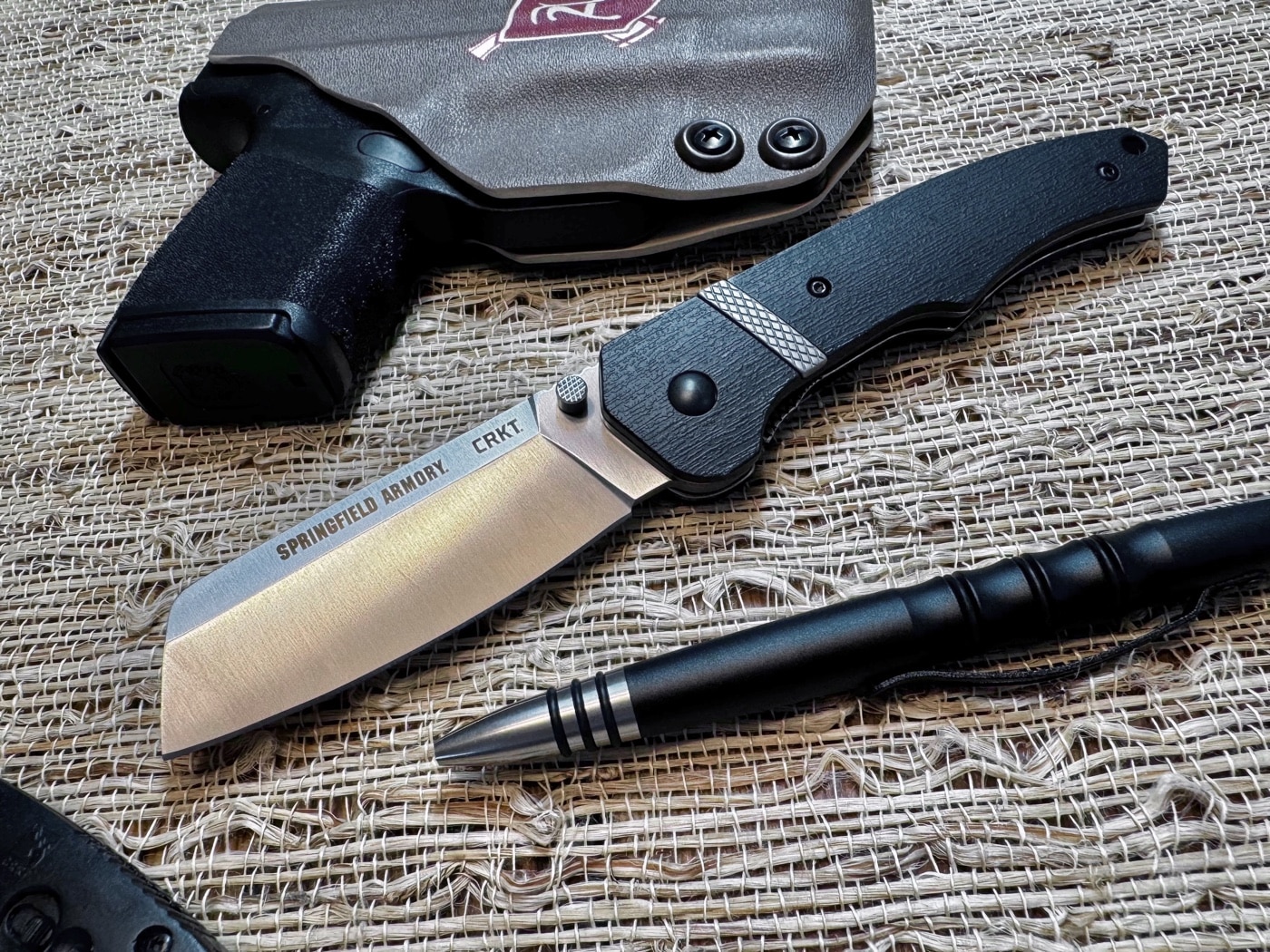
In this CRKT Ripsnort II review, knife expert Randall Chaney examines the usefulness of the cleaver-style blade in a real-world context.
Booth says, This Ripsnort were talking about a serious everyday carry … .
It has a gently curving cleaver-style blade, which gives it a ferocious cutting edge.
Its tough guy stuff.

Ripsnort II designer Philip Booth turned from traditional fine arts to knife making in the 1980s. Image courtesy of Philip Booth
Designer Booth was an award-winning painter and printmaker before taking his fine arts background to knife making.
Handy that his dad had been a tool and die maker.
Philip Booths efforts have been rewarded with trophies at Blade Show in 2005 and 2016.
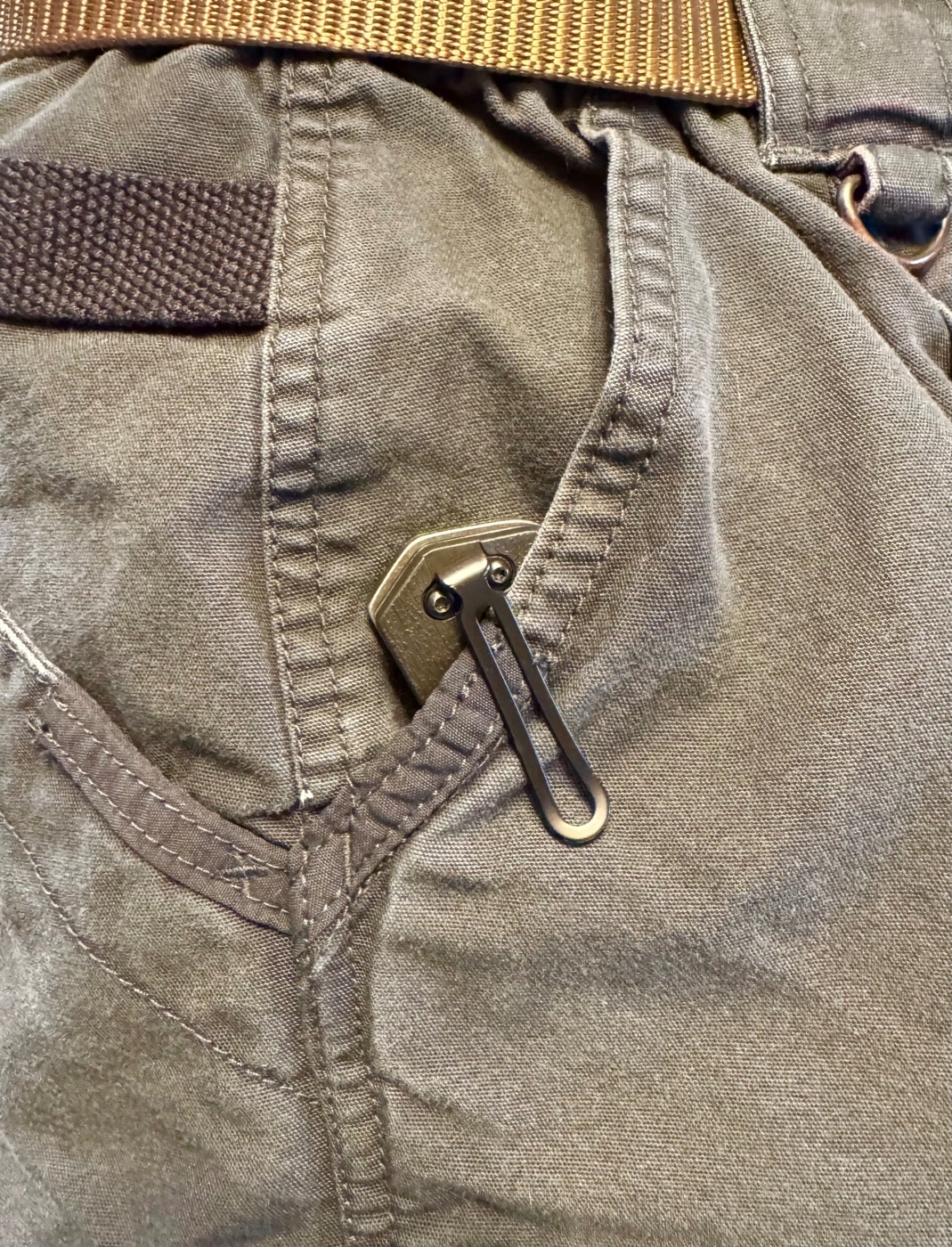
The pocket clip on the Ripsnort II allows the CRKT knife to sit low in the pocket without drawing a lot of attention to itself.
[Dont miss Clayton Walkers article onknife lock types.]
The 312 8Cr13MoV stainless steel blade is 1/8 in the thickest part of its cross-section.
Further, the flat grind gives the blade the strength a cleaver should have.
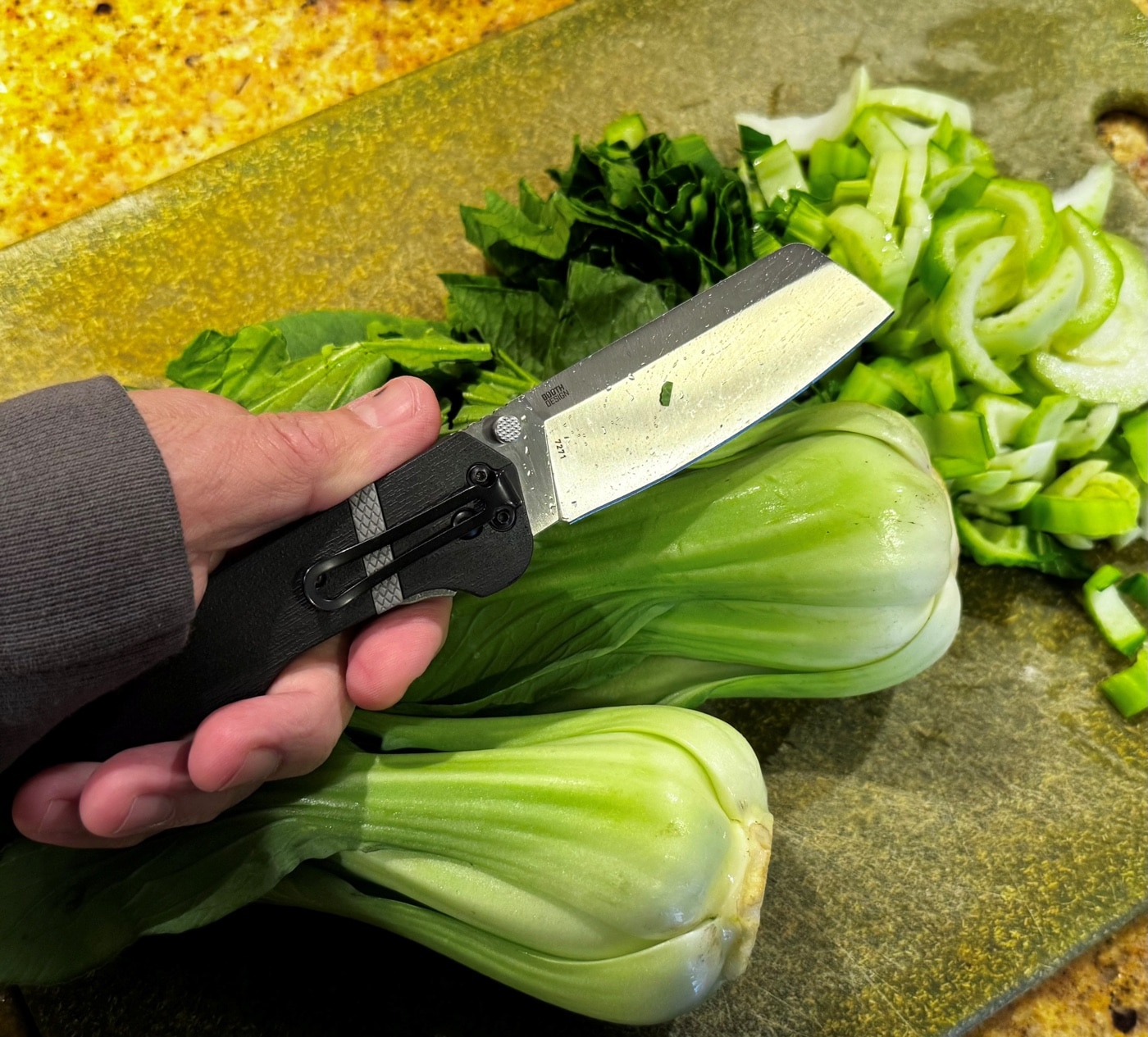
Few tasks we use our knives for are considered tactical. In his testing, Chaney incorporated a variety of evaluations, including chopping vegetables with the CRKT Ripsnort II knife.
These impart a heft to the blade that can be felt when you thumb it open.
Bearings ease the smooth swing of the knife into the locked position.
I tightened up the pivot bolt just a bit to fine-tune it.
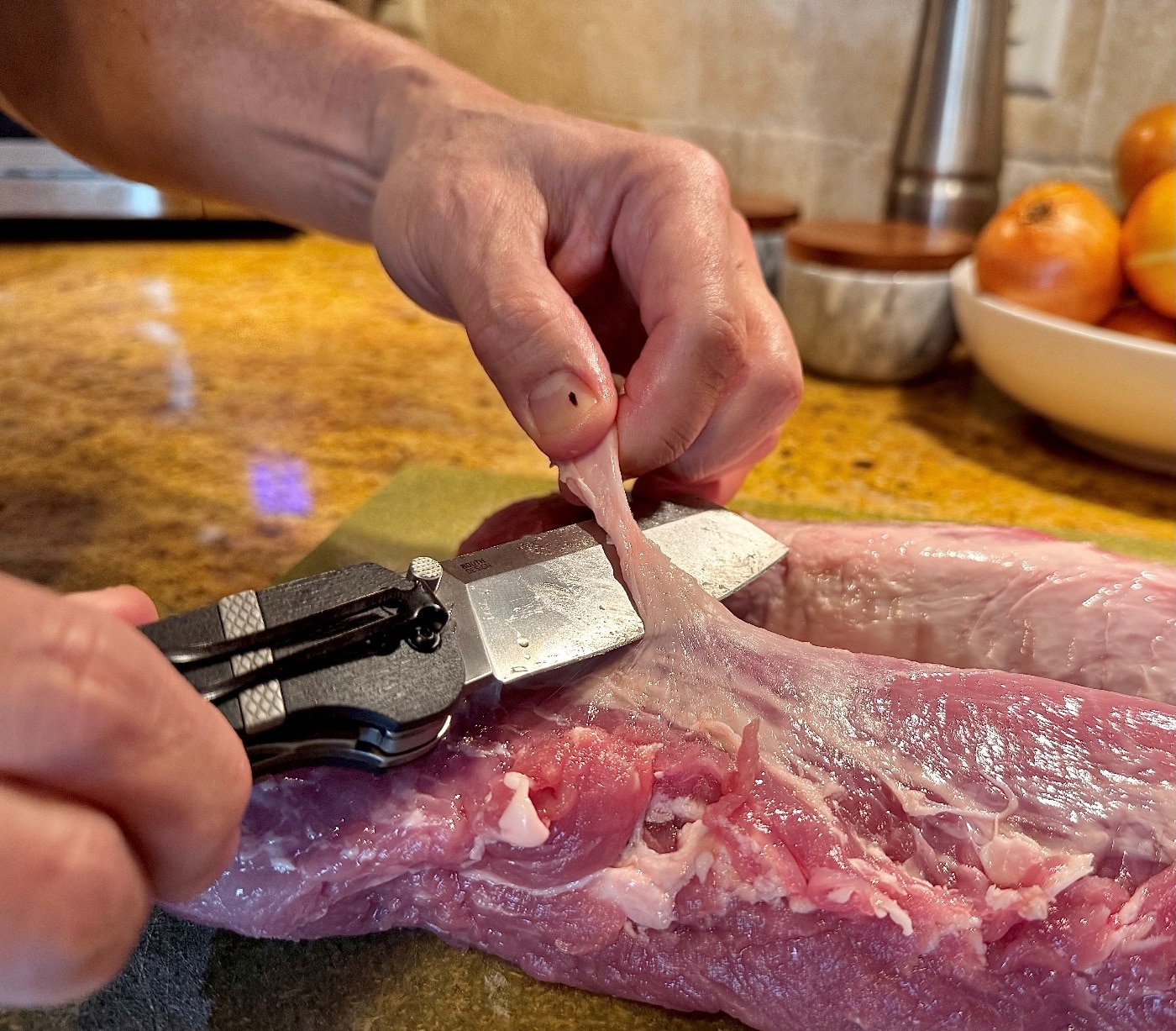
In the kitchen or in the field, the Ripsnort II allows the user to cut and trim meat with relative ease.
A T6 star bit is used to remove the pocket clip and dive into the T8 star pivot bolt.
And about the blade, what is the difference between the cleaver and the sheepsfoot?
They differ mostly in how acute the angle is at the front of the blade.
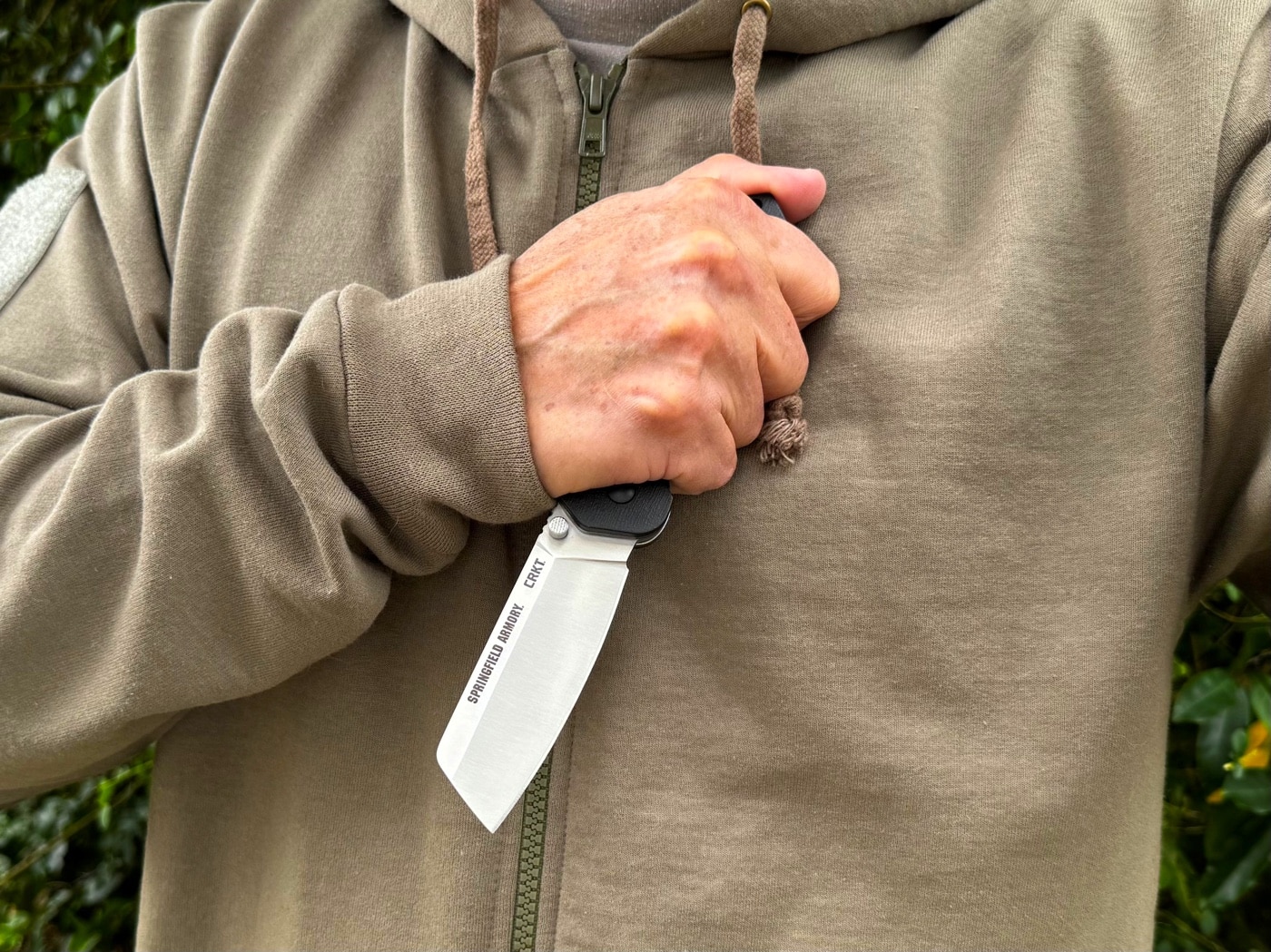
Similar to the sheepsfoot blade style, the cleaver-style blade on the Ripsnort II is a powerful cutter than can serve well in self-defense use. It offers excellent controllability.
The sheepsfoot has a generally curved, laid-back tip.
Cleavers are more squared-up.
Both have little belly in the cutting edge.
Yeah, they can be similar.
[Not sure on what kind of knife you need?
Read our article comparing thefixed vs. folding knife.]
CRKT characterizes the Ripsnorts as cleavers.
You could make an argument for them being big sheepsfoots.
Not a hill Im wanting to expire upon.
A peek at the liners shows the inlays are pinned in and not simply glued.
A nod to durability.
Columbia River just nails these inlays and theyre the exact same angle.
Man, it makes it look good.
Spoken like a true artist.
The Ripsnort IIs handle is very secure.
A black deep concealment pocket clip is reserved for the knifes right side, tip-down carry only.
This is usually to keep overall costs down with less drilling and tapping and it shows in the MSRP.
In keeping with Booths art background, the clip is a stylish loop.
Black GRN comprises the backspacer.
The requisite lanyard hole adorns the butt of the knife.
Overall, the Ripsnort II comes to weigh-in at a solid 6.2 ounces.
The bigger Ripsnort II weighs just two-tenths of an ounce more than the original Ripsnort.
I did not need or miss a spear-like point.
It retained its edge throughout.
In the testing lab, I went looking for things to hack upon with the Ripsnort II.
Cardboard and packing tape, yes.
My usual course of abuse did not damage the blade.
No complaints in this department.
[Be sure to read Chaneys article abouthow to sharpen a blade.]
The materials, fit, and finish on this budget knife are excellent.
The Springfield Armory logo finds a nice placement on the upper swedge of the blade.
Go to forum thread




